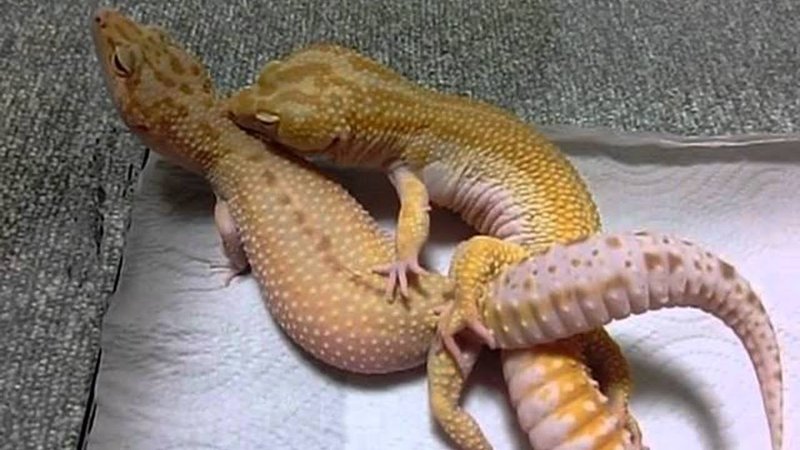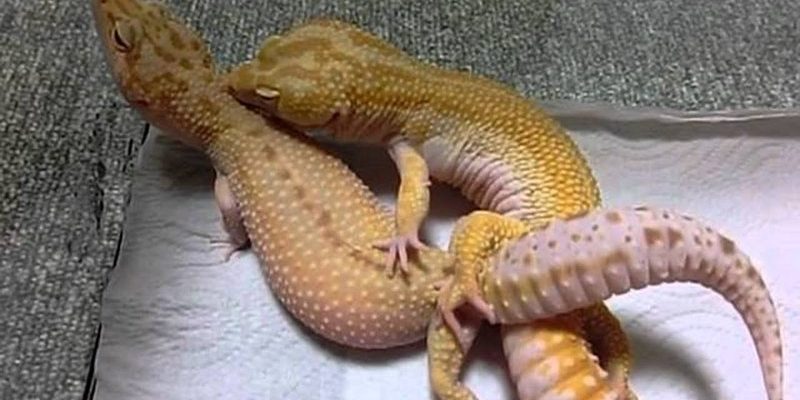
Understanding the breeding and reproductive behavior of leopard geckos can be intriguing for both current and prospective owners. If you’re thinking about breeding them or just want to know more about their fascinating lives, you’re in the right place. Let’s dive into their world, exploring everything from courtship rituals to what happens when those baby geckos finally hatch.
Understanding Leopard Gecko Mating Rituals
The mating process for leopard geckos isn’t just a quick affair; it’s a dance of sorts. Male leopard geckos often engage in elaborate courtship behaviors to attract females. You might be wondering what this looks like. Well, males will often perform a series of movements, including head bobbing and tail waving, to catch the attention of a female. It’s like a little reptilian show that’s meant to impress!
During this time, the males also release pheromones—chemical signals that can indicate their readiness to mate. The females can pick up on these scents, and it’s a crucial part of the courtship process. If the female is receptive, she’ll respond positively to these displays. It’s kind of like a first date, where both parties are feeling each other out, deciding if they’re compatible.
Once the male has won over the female, they’ll engage in a mating process that can last several hours. It can be quite a sight to see! This period is essential for ensuring successful reproduction.
The Breeding Season: When Does It Happen?
Leopard geckos have a specific breeding season, which usually occurs in the spring and early summer. The length of this season can depend on several factors, including the geckos’ habitat and environmental conditions. In the wild, changes in temperature and daylight can trigger their reproductive cycles, signaling that it’s time to find a mate.
For pet owners, understanding this timing is important. Knowing when your leopard gecko is likely to breed can help you prepare. You might need to adjust their habitat to mimic these natural conditions—perhaps increasing the warmth just a bit or ensuring they receive plenty of light. It’s like giving them a friendly nudge to say, “Hey, it’s time to find a partner!”
Keep in mind that not every female will breed during every season. Some might skip a year, and that’s perfectly normal. Just like us, they have their own rhythms and preferences!
Building a Nest: Preparing for Eggs
After successful mating, females start preparing to lay their eggs, which is a big deal in the leopard gecko world. You might be surprised to learn that females can lay two eggs at a time, and they can do this several times in a breeding season.
To lay their eggs, female geckos need a safe, moist environment. This is where your role as a pet owner becomes crucial if you’re planning to breed them. You’ll want to provide a nesting box filled with a substrate that holds moisture well, such as a mix of vermiculite and coconut fiber. Think of it as setting up a cozy home for those future baby geckos!
Once the female lays her eggs, she’ll often bury them to protect them from potential dangers. This instinctive behavior is essential for the survival of her offspring, just like how many animals hide their nests.
Incubation: The Waiting Game
Now that the eggs are laid, it’s time for a little patience. Leopard gecko eggs generally take about 60 to 90 days to incubate, depending on the temperature. Humidity and environment play a big role here. Keeping the eggs at a steady temperature between 80°F and 90°F will help them develop properly.
Some breeders opt for an incubation method called “obligate incubation,” where the eggs are placed in incubators that maintain optimal conditions. It’s a little like being a guardian, ensuring that everything is just right for those tiny geckos to grow.
You might also find that temperature can influence the sex of the hatchlings, with higher temperatures generally resulting in more males and cooler temperatures resulting in more females. This fascinating aspect of leopard gecko biology adds an extra layer of excitement to the breeding process.
Hatching: The Arrival of Baby Geckos
After weeks of anticipation, hatch day finally arrives! Leopard gecko eggs will typically start to show signs of hatching by getting a bit cloudy. It’s a thrilling moment for any breeder. You’ll want to keep the eggs undisturbed during this time. The little geckos will start breaking through the shell on their own, a process known as pipping.
Once they’ve hatched, it’s time for your new gecko babies to start acclimating to their environment. They’ll need a warm, safe area to thrive. You’ll want to provide food and water right away, as they may be hungry after their time in the egg.
It’s amazing to watch these tiny creatures grow. They often start off with vibrant colors and markings that change as they mature. Those little leopard geckos will grow up fast, so be prepared for a lively household!
Post-Hatch Care: Nurturing Your Hatchlings
Now that you have baby geckos, your responsibilities don’t end there! Proper care is essential for their survival and growth. You’ll want to provide a suitable habitat with plenty of hiding spots and places to climb. This will mimic their natural environment and give them a sense of security.
Feeding them a balanced diet, rich in insects like crickets and mealworms, is important. You’ll also need to sprinkle their food with calcium and vitamin supplements to ensure they grow strong and healthy.
Monitoring their health and keeping their habitat clean will help you avoid any issues down the road. It’s like being a proud parent—you’re invested in their well-being, and it’s rewarding to see them thrive and grow!
Potential Challenges in Breeding Leopard Geckos
Breeding leopard geckos can be a rewarding but sometimes tricky journey. There are a few challenges you might face along the way. One common issue is aggression, particularly among males. If your male geckos are housed together, you could see some territorial behavior. It’s best to keep them separated during the breeding season to avoid any harm.
Additionally, not all females will successfully lay eggs, or they may lay infertile eggs. This is part of nature’s way, but it can be disheartening if you’re hoping to see hatchlings.
You might also encounter problems with egg incubation if the temperature or humidity isn’t just right. Make sure to regularly check and adjust conditions as necessary. Having a good thermometer and hygrometer can be a lifesaver here!
Breeding and understanding the reproductive behavior of leopard geckos can open up a whole new world for pet owners. From the courtship dances to the hatching of vibrant little hatchlings, it’s an experience filled with excitement and wonder.
Whether you’re already a gecko owner or thinking about becoming one, remember that patience and a bit of knowledge are key. Every step—from setting up their living conditions to caring for hatchlings—can be a joyful learning experience that brings you closer to these unique reptiles. Embrace the journey and enjoy watching your little leopard geckos thrive!

